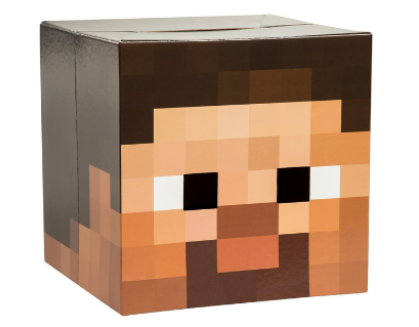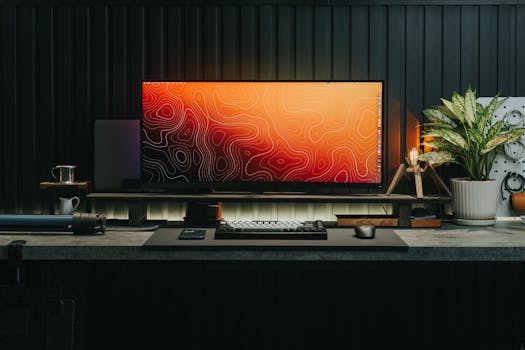Anyone who’s ever lost track of time during an epic game knows the blurry-eyed aftermath. Your eyes ache, the screen looks fuzzier, and the next level suddenly feels twice as hard.
Understanding why your eyes tire out during gaming isn’t just a medical curiosity—it’s about staying comfortable and enjoying your favorite hobby, whether you play for fun or competition.
This guide shares practical, easy-to-follow advice for reducing eye strain. Readers will find actionable steps, helpful analogies, and concrete strategies to break free from that tired, dry-eyed feeling.
Setting Up Your Gaming Space for Eye Comfort and Focus
A well-organized gaming area is your first line of defense against eye fatigue. Arrange your desk, lighting, and monitor placement before you dive into long play sessions.
Instead of making do with a cramped desk or harsh lamp, take time to tailor your setup. This simple change can help reduce headaches and boost eye comfort within hours.
Guiding Your Monitor Placement for Lasting Comfort
Set your monitor about an arm’s length away, with the top edge of the screen at eye level. This position lets your eyes relax naturally, and it helps avoid neck and back strain as well.
If you notice yourself leaning forward, try adjusting your chair or raising the screen. Small tweaks prevent your vision from fighting glare or awkward angles—something most gamers fix without even realizing!
When setting up, try this quick check: sit back in your chair, look forward, and see if your eyes land straight on the center of your display. Adjust from there for a custom fit.
Creating a Balanced Lighting Environment
Pick ambient lighting that fills the room but doesn’t overpower your monitor. Overhead lights that reflect harshly off your screen add to strain and can cause headaches or squinting.
Lamps behind your monitor—called bias lighting—reduce contrast and help eyes stay relaxed. Plug in a soft LED strip or desk lamp at the back of your setup for this effect.
If you notice shadows or reflections during play, angle your lighting or reposition the screen. Tweak until the picture feels easy to see, without squinting or over-bright spots.
| Element | Good Practice | Common Mistake | What to Fix First |
|---|---|---|---|
| Monitor Height | Eye level with top edge | Screen much too low/high | Raise/lower monitor |
| Viewing Distance | 20-30 inches away | Cramped or far back | Move monitor/desk |
| Lighting | Soft ambient light | Direct bulb glare | Add bias lighting |
| Seating | Back supported, feet flat | Hunched shoulders | Adjust chair height |
| Screen Angle | No window reflections | Glare from side sunlight | Reposition screen |
Adopting Smart Viewing Habits for Every Gaming Session
Consistent habits during play help keep your eyes fresh, even during multi-hour stretches. Focus on breaks, blinking, and smart screen use to feel the difference.
Keeping these strategies in mind can make gaming feel less exhausting and help protect your vision well into adulthood.
Integrating the 20-20-20 Rule Into Your Routine
Every 20 minutes, look away from your game for 20 seconds at something 20 feet away. Set a timer or tack a sticky note on your monitor for a reminder if it helps.
This simple rule lets your eyes reset and cuts the risk of fatigue, dryness, and blurry vision—effects that sneak up on players who never look up from the screen.
- Pause gameplay every 20 minutes to keep eyes refreshed. It breaks up long stares and prevents unnoticed eye strain from creeping in.
- Set phone reminders or use in-game downtime. Consistent timing builds a healthy habit without pulling you out of the fun.
- Let your eyes wander around the room or out a window for variety. Focusing at multiple distances helps stretch muscles and builds lasting comfort.
- If 20 minutes is too short, start with 30 and work backward. Personalize the interval, but avoid long uninterrupted gaming streaks.
- Try this phrase: “Every respawn, I look up.” Tying breaks to game events makes them automatic, especially in fast-paced matches.
Integrating breaks as part of your normal play process can increase your focus and make sessions feel less draining overall.
Remembering to Blink and Stay Hydrated
Staring intensely at the screen lowers blink rates, leading to dry, itchy eyes and discomfort that lasts after you log off.
Keep a water bottle handy and make conscious blinking a part of your session. Your vision will thank you at the end of the night.
- Drink water before, during, and after gaming to offset dehydration that worsens dry eyes and fatigue. Sip regularly, not just when thirsty.
- Remind yourself to blink by setting up a subtle in-game cue—like blinking at every loading screen or cutscene for a mental reset.
- Stretch or roll your eyes during breaks to improve tear flow and circulation. This can feel odd at first, but it works wonders over hours-long sessions.
- Keep eye drops close for especially dry days, but use them according to package directions to avoid rebound irritation.
- Laugh with friends or teammates—shared breaks or chat can naturally increase blink rate and help combat lingering fatigue.
Frequent blinking and hydration help preserve healthy, lubricated eyes, ensuring every session ends on a high note rather than a headache.
Adjusting Visual Elements for Clarity and Ease
Optimize your screen settings before every session for clearer visuals and less strain. Even minor adjustments to contrast, text size, and color can create a noticeable difference in your comfort during long campaigns.
Make these changes at setup, and revisit them after installing a new game or when you notice increased squinting or difficulty reading menus.
Customizing In-Game UI and HUD Elements
Most games include settings for text size, HUD (heads-up display) elements, and color schemes. Don’t just stick with the defaults—adjusting these for visibility keeps you immersed and prevents unnecessary squinting or leaning close.
If you struggle with tiny mission objectives or subtle color differences, bump up size or tweak colorblind modes. Clear, readable info lets you focus on the action, not deciphering small fonts.
Picture this: In a shooter, you increase UI scale so ammo counts and health bars are instantly visible. Less eye darting means less tiredness—plus, you react faster in tight moments.
Calibrating Contrast and Color Balance
Reduce screen brightness below its default level by 15-20%, then boost contrast so game visuals pop without searing your eyes. This formula often feels better than the standard factory setting.
If you notice eyes burning or squinting after a new game starts, step into a menu and adjust the gamma or color temperature until colors feel balanced yet easy on the eyes.
Think of the right balance like putting on the perfect pair of sunglasses for a sunny day: clear visuals linger, but harsh glares fade so you can stay out as long as you like.
Contrasting Daytime and Nighttime Gaming Demands
Game visuals feel different depending on whether you play with sunlight pouring in or late at night with house lights dimmed. Each situation demands its own approach for optimal comfort.
An afternoon gaming session bathed in natural light might call for reduced screen brightness and careful positioning, while late-night marathons work better with warm, soft lighting arranged behind the screen.
| Time of Day | Lighting Condition | Adjustment Tip |
|---|---|---|
| Daytime | Bright window nearby | Lower screen brightness, close curtains |
| Daytime | Dark room | Add secondary desk lamp |
| Nighttime | Overhead lights off | Use bias lighting behind monitor |
The table above contrasts daytime and nighttime needs, giving you quick options for adapting your setup with minimal interruption or distraction from your game flow.
Balancing Accessories and On-Screen Filters for Healthier Eyes
Gaming glasses, blue light filters, and screen covers all have a place, but the real advantage comes from combining these tools with self-awareness and regular screen breaks.
Try comparing them like athletic gear—you wouldn’t just wear running shoes and skip the warm-up. Accessories amplify the benefits of good habits, not replace them entirely.
Some players swear by blue-light filtering glasses for night sessions, noting clearer sleep and less late-night tension. Others use monitor overlays to tune intensity, which is handy when sharing screens with family in bright rooms.
Avoid using any accessory as an excuse to skip breaks or ignore discomfort signals. That’s like driving with tinted windows but never stopping for a rest on a long trip.
Creating a Personal Eye Care Routine You’ll Actually Use
- Practice the 20-20-20 rule to give your eyes frequent, restorative breaks without losing focus on your game.
- Stay hydrated—have water on your desk and sip between sessions to avoid hidden dehydration.
- Adjust screen settings before every session, not just once. Needs will change based on lighting, game style, or personal fatigue.
- Wrap up long sessions with a few minutes of eye yoga or gentle stretching, letting your vision reset.
- Use gaming glasses or filter overlays if bright screens disrupt your sleep pattern or cause headaches, but follow best practices above.
- Ask friends for tips—compare routines and share what works. Sometimes the best revelation comes from casual conversation in a chat lobby.
Experiment with each tip, and create a nightly checklist for a week to see which changes have the biggest positive impact on your comfort and performance.
By building these steps into your routine, you make healthy eye care feel as natural as saving your progress after a completed quest instead of an afterthought you forget during late-night raids.
Final Strategies for Comfortable, Rewarding Gaming Sessions
Building an eye-friendly gaming environment combines physical adjustments, schedule tweaks, and a commitment to knowing your limits before discomfort sets in. Start with small changes, and you’ll notice comfort increasing within a session or two.
When you take time to experiment with placement, settings, and routine, you’ll not only game smarter—you’ll give your eyes a well-deserved break. This lets you enjoy longer, more focused sessions and even a boost in gameplay results.
It’s tempting to power through tiredness, but pausing, rehydrating, and blinking with intent works much better over the long haul than pushing past your body’s limits. Often, your next win comes right after a clear-headed break.
The pro move is to treat eye care as a core part of your gaming ritual, right alongside warm-ups, loadouts, or practice sessions. You’ll play better and recover faster for tomorrow’s adventure.
Whether you’re logging on for an hour or an epic all-nighter, adopting these strategies can help your games stay fun, immersive, and comfortable—no matter how many levels you unlock next.

